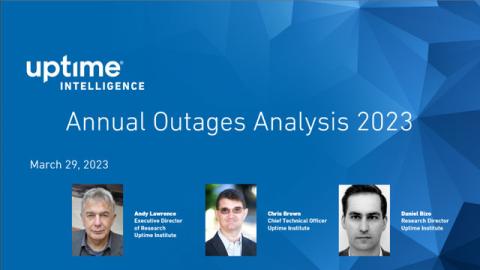Low latency is the main reason cloud providers offer edge services. Only a few years ago, the same providers argued that the public cloud (hosted in hyperscale data centers) was suitable for most workloads. But as organizations have remained…
filters
Explore All Topics
This Q&A brings together contributor questions and expert answers relating to Uptime Institute Intelligence's Five data center predictions for 2023 report.
To help address the growing scrutiny of digital infrastructure efficiency, this webinar explores some of the options available to communicate IT system efficiency and work delivered per unit of energy consumed.
Early in 2022, Uptime Intelligence observed that the return of Moore’s law in the data center (or, more accurately, the performance and energy efficiency gains associated with it) would come with major caveats (see Moore’s law resumes — but not for…
Operators report that their sustainability initiatives not only benefit the environment - they also reduce operating costs and improve customer engagement. Sustainability strategies, however, vary widely.
Cloud providers divide the technologies that underpin their services into two ”planes”, each with a different architecture and availability goal. The control plane manages resources in the cloud; the data plane runs the cloud buyer’s application.In…
This report shows how rising market concentration and poor visibility drive risk exposure, and explains why organizations should prioritize resilient single-cloud architectures before they consider dual-cloud implementations.
Join us for 2023’s annual benchmark review of the impacts, costs and changing types and frequency of crucial infrastructure failures. Outages remain a major industry concern despite improving technology and better management of availability. Uptime…
This Q&A brings together contributor/member questions and expert answers from a series of Uptime webinars held on the topic of sustainability and regulations and reporting in 2022.
Topics discussed include: the collection and management of greenhouse gas emissions data, the options for dealing with Scope 3 emissions and the procurement and reporting of renewable energy for both direct consumption and as offsets.
European countries narrowly avoided an energy crisis in the past winter months, as a shortfall in fossil fuel supplies from Russia threatened to destabilize power grids across the region. This elevated level of risk to the normally robust…
There is evidence that outage rates have been gradually falling in recent years. This report brings together and analyzes recent Uptime Institute data on IT and data center outage trends: their causes, costs and consequences.
This Q&A brings together contributor / member questions and expert answers resulting from the Uptime Institute Global Data Center Survey 2022. Topics discussed include: IT efficiency, sustainability, outages, supply chain issues and staffing.These…
For the past two years, Uptime has been tracking the progress of what is likely to be the most important legislation yet for data center sustainability and efficiency reporting. The European Energy Efficiency Directive (EED) will affect all but the…
Hyperscale cloud providers have opened numerous operating regions in all corners of the world over the past decade. The three most prominent — Amazon Web Services (AWS), Google Cloud and Microsoft Azure — now have 105 distinct regions (excluding…
 Dr. Owen Rogers
Dr. Owen Rogers

 Daniel Bizo
Daniel Bizo

 Andy Lawrence
Andy Lawrence
 Jay Dietrich
Jay Dietrich


 Douglas Donnellan
Douglas Donnellan



 Chris Brown
Chris Brown



 Max Smolaks
Max Smolaks
 Lenny Simon
Lenny Simon



